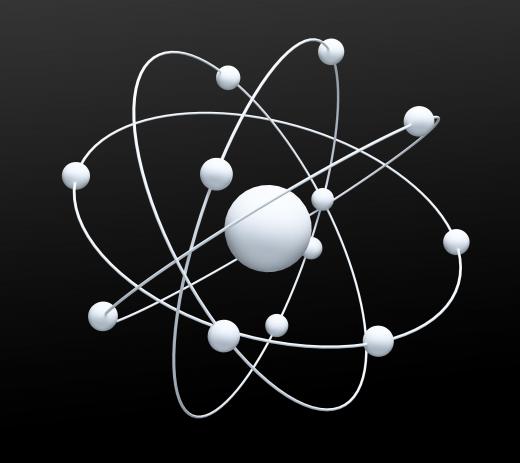What Is Metallic Bonding?
Metallic bonds are the chemical bonds that hold atoms together in metals. They differ from covalent and ionic bonds because the electrons in metallic bonding are delocalized, that is, they are not shared between only two atoms. Instead, the electrons in metallic bonds float freely through the lattice of metal nuclei. This type of bonding gives metals many unique material properties, including excellent thermal and electrical conductivity, high melting points, and malleability.
In most metals, atoms are packed closely together so that each atom touches several other atoms, creating a lattice. The electrons of each atom are shared in the orbitals of the surrounding atoms. This allows electrons to migrate through the lattice away from their parent atoms, which then accept new electrons.

The metal atoms in the lattice structure are always complete atoms, not ions. Although their positively charged nuclei attract electrons, they never technically become ions, because they do not lose electrons. For every electron that is attracted to a different atom in the structure, a new electron takes its place in the original orbital.
Depending on the type of metal and the organization of its lattice structure, metallic bonds can vary in strength. Closely-packed atoms will create stronger metallic bonds than atoms that are less closely packed. Metals with a larger number of electrons will also be stronger than those with a more sparsely populated electron sea. The stronger the metallic bonding is, the higher the metal’s melting point will be.
Metallic bonding also gives metals excellent conductivity. This is because the delocalized electrons can move freely through the metal lattice, rapidly carrying energy in the form of heat or electricity. Certain metals have electron configurations that make them particularly good conductors — their electrons are easily transferred from one atom to another. Copper is one of the best conductors and is often used in wiring and other electrical applications due to its low cost.
Perhaps one of the greatest advantages that metals have in materials science is their ability to be molded into shapes or thin wires. The malleability of metal is due to metallic bonding. When a force is applied, the metal can deform without shattering because the delocalized electrons transfer to other atoms, allowing the atoms to roll past each other without strong repulsion. As an example, it is useful to imagine lowering a block of cement into pit of rubber balls — the balls do not break, they simply rearrange themselves. Metallic bonding enables the metal solid to rearrange itself in an analogous way.
AS FEATURED ON:
AS FEATURED ON:











Discussion Comments
@indigomoth - It's a shame they didn't tell you about this at school, although if you had gone high enough in the science classes, you would have learned it eventually. They do have some really good documentaries with metallic bonding animations if you want to check those out.
One of the things I think is pretty cool that I remember my teacher brought back to this, was the fact that some metals, like gold, can be stretched to the point where they are basically like tissue paper and they still hold together, because of metallic bonding.
There are actually kids in India who spend their days hammering out gold until it is this thin, so that they can use the gold to coat a pill which is supposed to make it a better medicine. I don't think that actually works, and of course it's cruel that the kids have to do it, but it's still a fascinating practice.
I never knew that was the reason that metal was so different from other kinds of materials in the way that it works and reacts. I actually really wish they had described it like this in school, because I think I would have pictured it better and remembered the properties of metals better if I had known about the metallic bond structure and how the electrons drift around it rather than staying with their own atoms.
I always tend to remember things better if I know the reason why something is the way it is, rather than just being told to memorize a list.
Post your comments